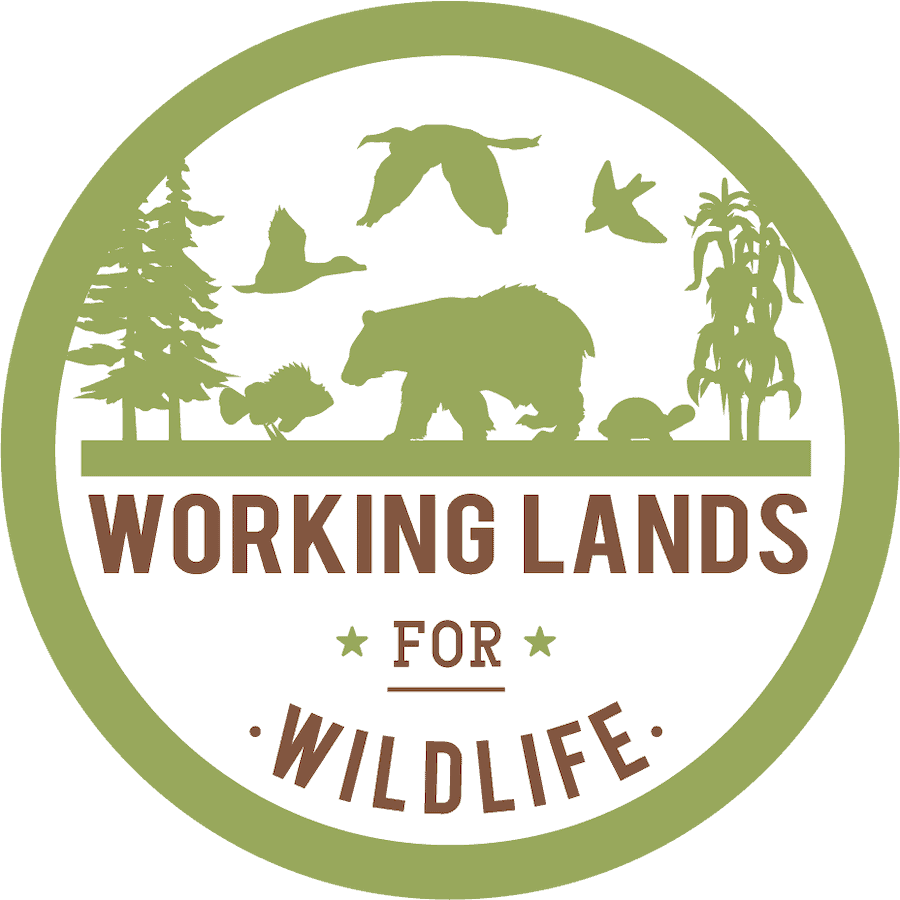-
Looking to increase waterfowl, wildlife habitat? (Keeping the Farm)
-
Short article in The Delmarva Farmer about the Working Lands for Wildlife Program's work on American Black Duck in Delaware
Located in
Information Materials
/
Published materials
-
American Fisheries Society Newsletter March 2022
-
Spokane Abstract Submission, Conservation in Infrastructure Bill, Perspectives on Drones
Located in
News & Announcements
/
WLFW Newsletters
/
American Fisheries Society Newsletter
-
Conservation Innovation Grants: Successful Grazing Lands - Innovation to Implementation
-
Join pasture specialists, local graziers, and NRCS staff to discuss the Conservation Innovation Grant (CIG) on Grazing Lands and the benefits of establishing and grazing native warm season grasses for livestock and ground nesting wildlife. See how NRCS is helping more farmers establish and utilize good grazing techniques on their farms.
Featuring Dr. Pat Keyser (Center for Native Grasslands Management), J.B. Daniel (NRCS Virginia), and Keith Tuck (Virginia Grazier).
Located in
Learning & Tech Transfer
/
Webinars & Videos
-
 Forage for Beef and Bobs
Forage for Beef and Bobs
-
Learn about the benefits of native grasses for beef cattle production and wildlife in Virginia. This short video (4 min) is especially relevant for beef producers and farmers. Brought to you NRCS Virginia.
Located in
Learning & Tech Transfer
/
Webinars & Videos
-
 Partnerships on Working Lands
Partnerships on Working Lands
-
Across the West, the National Fish and Wildlife Foundation is working with ranchers, federal and state partners, and other non-profit organizations to support conservation on working lands.
Located in
Learning & Tech Transfer
/
Webinars & Videos
-
 Northern Bobwhites and Fire: A Perfect Match
Northern Bobwhites and Fire: A Perfect Match
-
Prescribed fire, bobwhite ecology, and local site conditions need to be aligned for optimal bobwhite population response. This course discusses the context of fire frequency, scale, and seasonality for bobwhite management and restoration.
Located in
Training
/
Videos, podcasts, multimedia
/
Videos
-
 Presentation to WLFW Partners on NOBO, Grasslands, and Savannas Framework
Presentation to WLFW Partners on NOBO, Grasslands, and Savannas Framework
-
On March 2, 2022 as the release of the release by NRCS of the new framework is pending, Bridgett Costanzo of WLFW and Jessica McGuire of Quail Forever gave an overview of the framework, the associated needs assessment, and activities already underway to add staff and design a national monitoring plan. To view the recorded webinar based on these slides, go to the webinars section
Located in
Resources
/
Northern Bobwhite, Grasslands, and Savannas (2022) Framework for Conservation Action
-
A Natural Treasure: Florida's Sandhills & Grasslands
-
Learn how local and state partners with USDA’s Natural Resources Conservation Service have permanently protected a pristine sandhill grassland ecosystem in north-central Florida from rapidly advancing development.
Located in
News & Announcements
/
WLFW News Inbox
-
Cal FIre Incidents
-
The California Department of Forestry and Fire Protection (CAL FIRE) responds to all types of emergencies. When the Department responds to a major CAL FIRE jurisdiction incident, the Department will post incident details to the web site. Major emergency incidents could include large, extended-day wildfires (10 acres or greater), floods, earthquakes, hazardous material spills, etc. This is a summary of all incidents, including those managed by CAL FIRE and other partner agencies.
Located in
Fire Mapping
/
Regional Fire Mapping
-
USDA Launches Strategy to Continue Conserving the Gopher Tortoise and its Critical Habitat
-
The U.S. Department of Agriculture’s (USDA) Natural Resources Conservation Service (NRCS) has released its new 5-year plan to conserve the Southeast’s threatened gopher tortoise by focusing on the conservation and restoration of its key habitat, the longleaf pine forests. Acting NRCS Chief Kevin Norton told Southeast AgNet the fate of the gopher tortoise is linked to habitat quality, and efforts to conserve habitat on private lands will be critical to its continued survival.
Located in
News & Announcements
/
WLFW News Inbox























